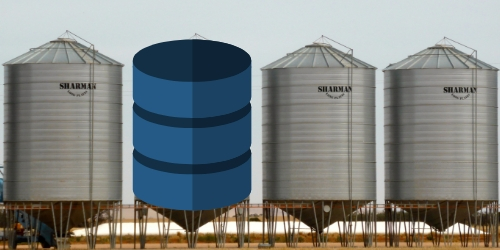
Data-driven Dailies vs. Fillable PDF Forms: You Decide
“While we’ve made a good form that can be filled out for the daily report, the numbers come to us as a “PDF” picture, which isn’t exactly helpful! We also have no easy way of storing and analyzing these numbers.”
Smartphones and tablets have opened the floodgates for field productivity. Mobile devices now allow site to document job site activity from the field. But, where does that information go once captured? The information delivers value when shared with the office team—and made actionable.
There are many different types of solutions in the marketplace when it comes to daily reports and capturing information from the field. At first look, they all look similar and obtain the same information: weather, job site photos, crew information, hours worked, materials installed, equipment used, and so forth. However, when you dig a bit deeper, not all solutions are the same. Some mobile apps feature robust field data collection capabilities while some are merely paper forms in a digital format.
Table of Contents
The importance of data
When you make the big leap and begin automating your operations, you want to ensure that the information you are collecting is valuable data that you can use to make effective decisions. More than just moving towards an automated, paperless process, the real value of implementing technology is the ability to capture data! Sure, there is plenty of data gathered from a construction job site. However, much of that data is unstructured.
| Structured Data | Unstructured Data |
|---|---|
|
|
While advances are being made into artificial intelligence and machine learning to analyze the massive amounts of unstructured data captured, in large part, project team achieve efficiencies when the field and operations technology platform captures structured data.
Structured data stores the information in relational databases for search and analysis of data. Both types of data are essential in managing construction operations; however, structured data is what will help you move the needle in terms of improving labor productivity and project profitability.

What information is your tool capturing?
When evaluating different solutions, it is crucial to understand the type of data captured and the value of that data. When searching for a tool for your supervisor to complete their daily reports via a mobile application, it is essential to evaluate the ease of use and the type of information collected. More importantly, you must assess the usage of that data. Where does that data go once captured?
Is it mostly an electronic pdf used to communicate daily job site activity to the General Contractor or the back office? Or is it also part of a robust project management system in which the data is used to address multiple things in a project?
Data-driven daily reports
Many daily report solutions are glorified paper forms that users complete from a mobile device. The electronic forms capture unstructured data that is not in a usable form. While the supervisor may be documenting crew hours, materials installed, and equipment usage, the information cannot be packaged in a usable manner. The information must be re-entered into a project management system and then triple-entered into an accounting system.
As a data-driven system, every data point captured by eSUB, from quantity installed to lost hours and more, delivers real-time insights for proactive project management. The information obtained from the field via eSUB’s Field Works Daily Reports and eSUB Time rolls up into valuable cost, efficiency, and productivity reports.
Crew Information – While other daily reports provide a simple work log displaying the number of workers and hours worked, eSUB captures crew information and labor activity by system, phases and cost codes.
Labor Hours – The information in the eSUB daily reports links hours to individual employees to create employee time cards and streamline payroll processing. With field data collection tied to project management, the labor information delivers valuable information for project reports including Percent of Efficiency, Cost-to-Complete, Cost Summary, As-Planned Hours, Labor Summary, Cost Code Summary and more.
Lost Hours – Through eSUB, the supervisor documents any lost hours in a daily report. The information is tracked in a Lost Hour report, a vital tool when communicating to the General Contractor regarding any delays to the schedule.
Units – Foreman documents units installed so that eSUB can track the efficiency of the labor force by units per hour.
Equipment Usage – The Foreman can document equipment usage daily. This data is poured into the Equipment Log for daily usage of equipment and Equipment Usage summary for a breakout of hours each piece of equipment has been used throughout the project.
Materials Installed – The Foreman is also able to document the different type of material and quantity used and installed for the day. eSUB delivers comprehensive project management capabilities including a Purchase Order module to track materials ordered and received. When documenting materials used in the Daily Report, the Material Item Summary is updated accordingly.
The information captured in eSUB’s Daily Reports is displayed in a single document that can be shared with General Contractors to document daily activity. Most importantly, it is more than just a single point solution or digital PDF form for daily reports. eSUB’s Field Works mobile app is only one module within eSUB’s comprehensive project management system, so the data captured from eSUB’s daily reports are used to address multiple items in a project.
Data-driven systems eliminate data silos
As structured data can be shared more easily with other systems, eSUB’s data driven daily reports eliminate data silos between different systems. Through a variety of integration methods, data from eSUB can be shared with many leading accounting systems. This data integration further streamlines operational efficiencies between the field and the office and different departments to keep everyone on the same page.
